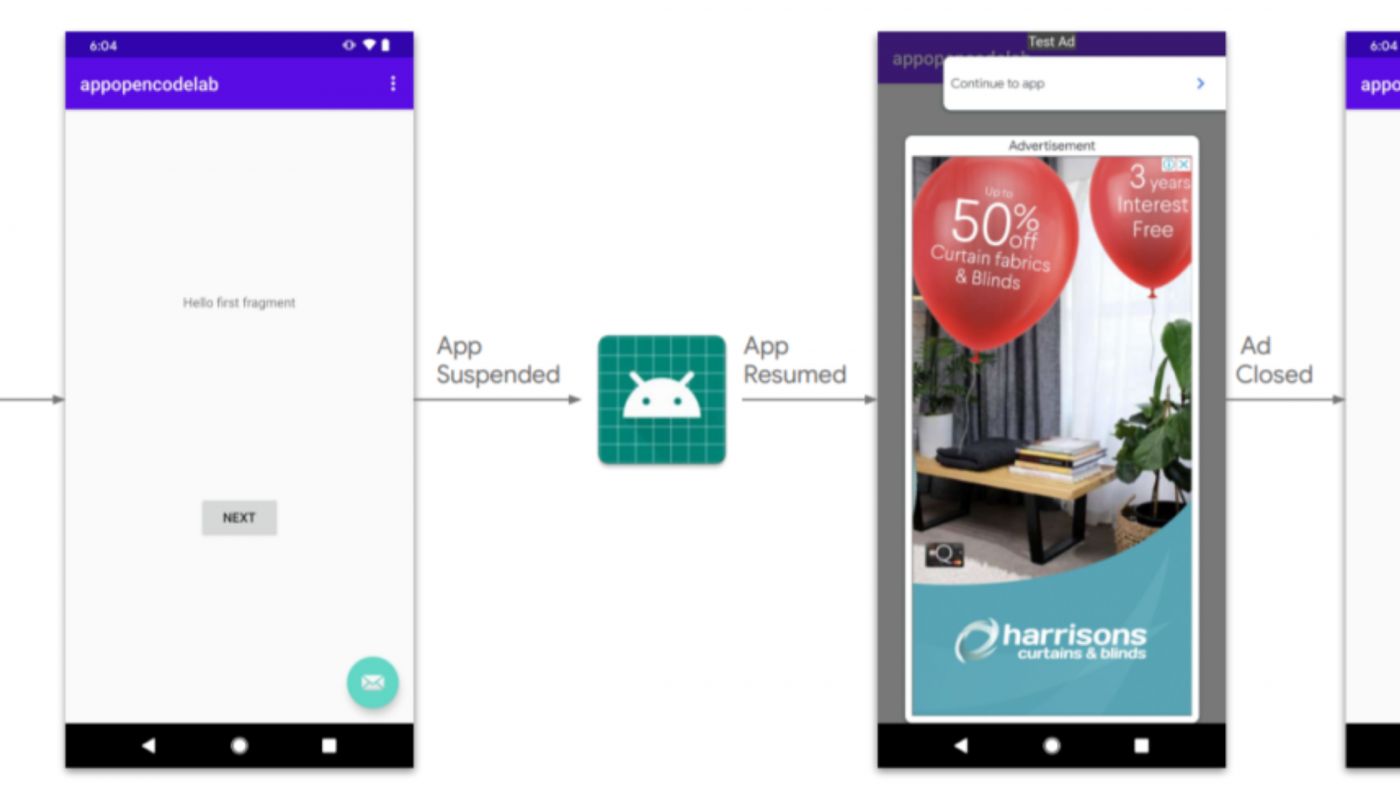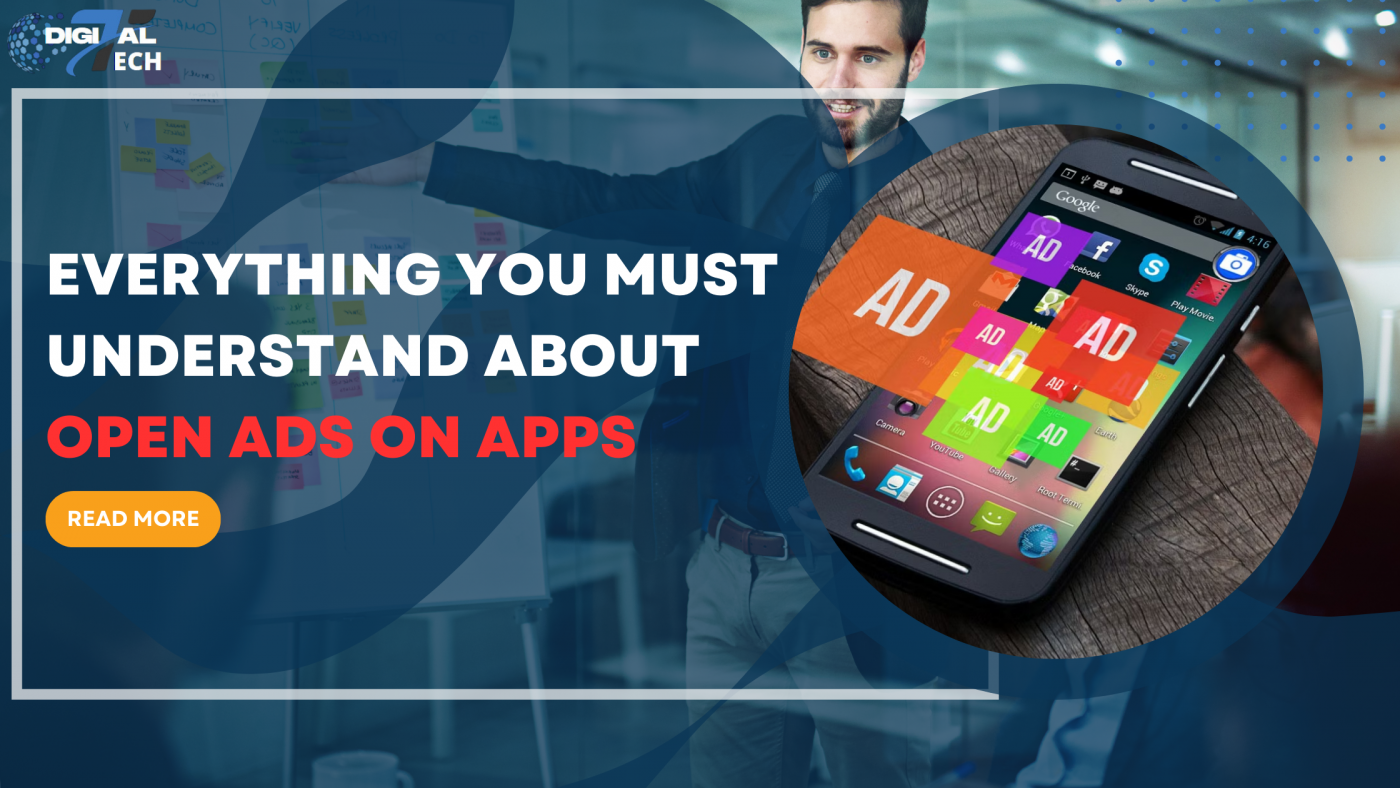An advertisement for a mobile app that shows up when a user opens the app is known as an open ad on apps. These full-screen advertisements usually appear during a transitional period, like the opening or foregrounding of an app.
1. What are open ads on apps?
The purpose of app-open advertisements is to allow ad publishers to make money off of their app-load screens. You can show app-open advertisements to consumers whenever your app is brought to the front, and they can always close them. A little branding space will immediately appear in the app opening ad to show that the user is still utilizing your app.

What are open ads on apps?
Originally released as the Admob app open advertisements, this relatively new ad type was first seen in the west. They have been operating for about a year and a half. Apart from rich media, video, and image ads, app-open ads provide a range of advertising options for generating income.
1. Open Ads on Apps Example
The load page shows when the user launches the app, and takes a few seconds for the content to load. The user sees an open ad for the app while doing that. They are redirected to the app’s home screen after closing the advertisement. Below is an example of an app-open advertisement.
The following summarizes the user experience with app-open ads:
- The user’s phone opens an app
- When the app launch ad displays, the loading/splash screen is displayed over the screen for a little while.
- appIf the app- opens with a video, it occupies the bottom 80% of the screen and begins to play.
- Users have the option to skip the advertisement at any time and move directly to the app’s content.
- Both cold starts (starting an app that hasn’t been running in the background) and hot starts (starting an app that has been running in the background) function similarly with app-open ads.
2. Which are the most crucial features of Open Ads on Apps?
App-open advertising differs from other ads in a few key ways:
- Full-screen advertising are not the same as app-open ads. As an alternative, they occupy about 80% of the screen.
- They could be video or picture advertisements.
- atatYou are able to skip them ar any time during the advertisement.
- ..You are able to skip them at any time during the advertisement,
- The app loading screen is constantly displayed next to them.
- Their eCPM may approach 70% of that of interstitial advertising (albeit our prior findings were noticeably lower).
- They had no discernible detrimental effect on the tests we ran in terms of retention.
- –At the moment, non-gaming apps are the primary use of app open advertisements.
- In Eastern markets, their popularity is far higher than in Western ones.
2. What is the typical eCPM for an app-open ad?
AdMob app open advertisements can achieve up to 70% of interstitial ad eCPMs based on their online session. Nevertheless, the eCPMs were much lower when we tested the format at scale (in a non-gaming app).
Finally, results from app-open advertising ranged from 13% to 39% of eCPMs for interstitial ads.
3. Which ad networks allow access to app-open ads?apps
App-open advertisements are a relatively new type of advertising, as we have already discussed. Only a few platforms have supported this kind of advertisement thus far; Pangle and Admob by Google are the only two available platforms at this time.
1. Does Google’s Better Ads Experience policy apply to the Open Ads on Apps?
Google made a big declaration a few months ago, mostly related to interstitial advertisements, saying that it would no longer stand for ads that interfere with user experiences.
With effect from September 30, this update addressed significant implementation concerns, like displaying interstitial advertisements during a level or during the app’s launch.
Further information regarding the non-compliant ad placements as per the updated policies may be found here.
How does this impact app open ads, though? Do they adhere to the most recent Google Better Ads Experience guidelines?
Disruptive ad restrictions have no effect on app-open ads because they are not full-screen advertisements. In fact, Google executives specifically mentioned app-open advertisements as a compliant type of advertising that is better than the interstitial ads that appear at the beginning of the app during their presentation on the modifications.
2. Is it possible for many ad networks to mediate the display of app-open ads?
None of the major media providers on the market currently support this ad format. To manage Admob and Pangle, developers might be able to create their own configuration, though.
-On the other hand, by supporting several networks, we may raise eCPM levels and boost competition. There are number of drawbacks to renaming these interstitial adverts and substituting them for app open ads:
- factThe face that they are really two distinct ad formats confuses developers.
- isSince the program would still need to be loaded, much of the “seamless” experience that app open advertising are meant to offer is gone (showing an ad during the splash screen).
- interestOperationally, it’s inclear if the app’s initial interestitial advertisements should be treated differently from later potential placements (after a level, etc.). The fact that ad monetization managers have to arbitrate and maximize performance on different waterfalls means they will undoubtedly have more work to do.
- It is obvious that this implementation violates Google Play’s Better Ad Experience guidelines. According to their standards, after your app has loaded, you can display a static interstitial ad as long as it complies with Google Play’s ad policy. Ads should not appear in your app until the home screen has loaded if it lacks a splash screen. While video commercials are not addressed, the instructions make it very obvious that static ads are OK.
4. Can app-open ads help your game monetization strategy?
Although app-open advertising offers a less invasive experience than interstitial ads, they are still more appropriate for casual games. Consequently, depending on the type of game you make, app-open advertising might be a terrific complement to your monetization plan.
To optimize ad revenue without negatively impacting retention (and, consequently, LTV), make sure you carefully evaluate your segmentation configuration (display app open advertisements only to non-paying users who have spent more than X days in your game).
App-open advertising should be taken into account because eCPMs are decreasing and more privacy limitations are being enforced by shops and authorities.

